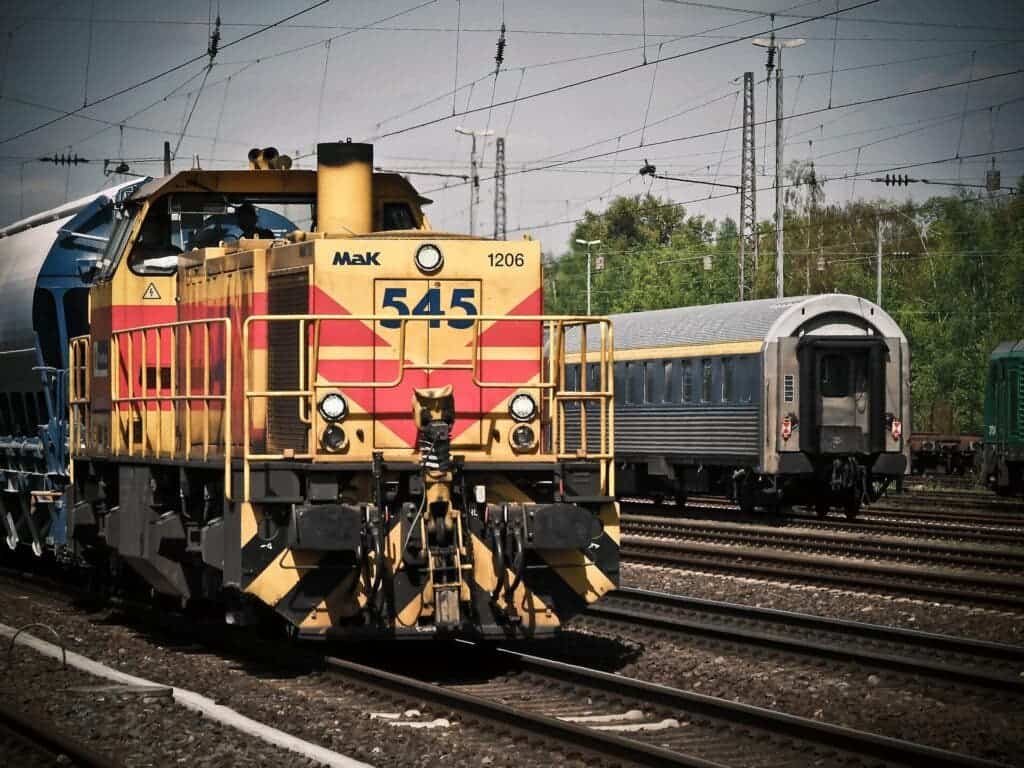Electrification of trains, at least freight ones, is within reach and makes economic sense, according to a new study. Researchers argue that plummeting battery prices, increasing battery energy densities and access to cheap renewable electricity make battery-electric rail possible, using the United States as an initial case study.

Greenhouse gas emissions have to be reduced by 45% by 2030 if we want to limit global warming to 1.5ºC, in line with the 2015 Paris Agreement on climate change. In order to do this, we must act on many different fronts, and the freight rail sector provides a unique opportunity for an aggressive short-term climate action, according to researchers from the University of Berkeley.
The US freight rail sector transports more than any other rail system. It uses diesel fuel and it currently transports 40% of national freight – with a capacity expected to double by 2050. Without substantial changes, it would account for half the global diesel used in the freight rail sector by the same year, according to previous studies.
Diesel freight trains are estimated to release about 35 million tons of CO2 per year, which produce sufficient air pollution to cause 1,000 premature deaths and $6.5 billion in health damage costs. They are still more fuel efficient than trucks but produce twice the air pollution because of less rigorous pollution controls in locomotives.
“A rapid conversion of the freight-rail sector is not only technically feasible and cost-effective, it would bring immediate and lasting health and economic benefits to lower income communities,” Natalie Popovich, lead author of the study, said in a statement. “And it would provide a boost to our nation’s efforts to curb climate change.”
Tackling train’s emissions
While many countries have transitioned to electric freight trains, that hasn’t been the case of the US. Its vast distances have so far made it tricky to build electrified lines over tracks. Still, there could be a simpler way forward, researchers believe. As they already have an electric motor, the US could retrofit the trains to be powered by batteries.
In fact, the existing battery technology could power a train for 150 miles, which is the average daily distance traveled, according to the study. A freight train powered by batteries would use half the energy that a diesel train requires. And considering that battery prices are fast declining, they would also be more cost-competitive as well.
The researchers calculated the economics of owning, maintaining, and running a diesel freight trains versus a battery-powered one. Over 20 years, a diesel locomotive costs $5.8-11.8 million, while a battery-powered would cost $6.4-8 million. Battery prices were estimated at current market value (US$100 per kwh) but this would likely decrease soon as well.
The retrofitted trains would also have a dual-fuel capability, choosing between a battery or diesel usage – an advantage from fully electrifying the rail system. At the same time, battery-electric trains could be deployed as a clean backup power, increasing the resilience of the electric grid. In the past, diesel trains were used as power generators.
“Conversion of the US freight rail sector to battery-electric would generate about 220 gigawatt-hours of mobile storage,” co-author Amol Phadke said in a statement. “Furthermore, these battery tender cars could be deployed during extreme events, such as during the recent catastrophic wildfires in California or the 2021 winter storm in Texas.”
The study was published in the journal Nature Energy.



